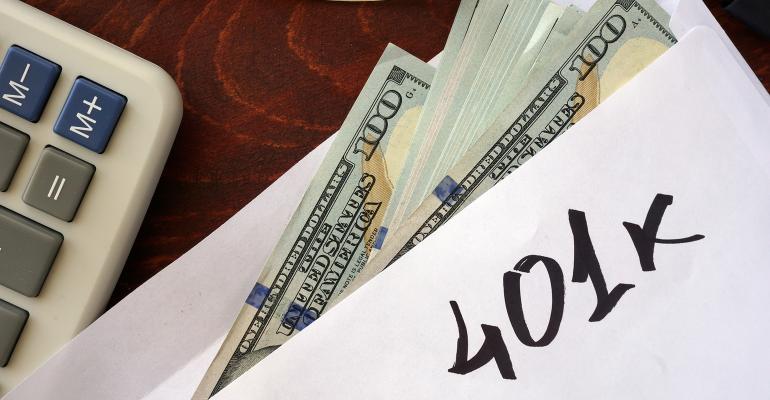(Bloomberg Opinion) -- The 401(k) retirement plan was authorized by the Revenue Act of 1978, which took effect in 1980, but its real genesis is the 1974 Employee Retirement Income Security Act, which fixed the problem of underfunded defined-benefit plans so thoroughly that private employers stopped offering them. Benefits consultant Ted Benna came up with a way to use the 1978 Act for a tax-deferred, defined-contribution plan and the rest is history.
The tax advantage of a 401(k) depends on four factors, all of which have changed dramatically since 1980 to the detriment of 401(k)s. For a median-income married couple with two children:
- The marginal federal income tax rate was 43% in 1980, 12% today
- The capital gains tax rate was 28% in 1980, 0% today
- The likely retirement bracket tax rate was 15% in 1980, 12% today
- Interest rates in 1980 were around 15%, compared to 0% today
Making some reasonable assumptions about a worker with 30 years to retirement, the 1980 version of the 401(k) tax deferral was equivalent to an additional investment return of 9.2% per year, an extraordinary incentive to save for retirement, even without an employer match. Using today’s numbers the benefit comes out to 0.6%, considerably less than the 1% to 2% in fees investors pay in typical 401(k) plans.
That example compares investments paying ordinary income tax rates yearly. But investors also have the option of using tax-efficient investments taxed mainly at capital gains rates at time of withdrawal. In the 1980 environment, the 401(k) plan had a 2.5% annual advantage over tax-efficient investments in a taxable account. In 2020, there is no tax advantage remaining to the 401(k).
So in 1980, the government offered a huge tax savings to encourage retirement savings, while today it offers little or no benefit. The employer contribution is still valuable, with a 100% match worth 2.3% per year in extra return over 30 years, but this has nothing to do with the 401(k) structure.
Another big change since 1980 is the availability of zero-cost, tax-efficient, well-diversified index funds in convenient form for retail investors. Yes, 401(k) plans have reduced costs as well, but to a much smaller degree. In 1980, a typical investor might have paid 3.5% of assets in fees either in or out of a 401(k). In 2000, that’s shrunk to perhaps 1.5% in a typical 401(k), and 0.5% outside. Some employers offer 401(k) with fees equal to or even lower than taxable alternatives, but others are stuck around the 3.5% level.
Now that 401(k)s have become the primary source of retirement savings for the middle class working in the private sector, we should restore the large tax incentive and bring fees into line with taxable investment standards. One easy change is to allow workers to roll 401(k) funds over to self-directed IRAs at any time (now they can do it only when they leave a job). That would force 401(k) platforms to compete in an open market, and it costs nothing.
Reducing taxes on 401(k)s will cost the government money, but it could be a good investment if it results in retirement security for more middle-income households. Two simple ideas are to make new 401(k) contributions and accumulated returns from them tax-free when withdrawn in retirement by below-median-income households, and to exclude FICA payroll deductions as well as income tax from 401(k) contributions. Not only would these make the tax advantages of 401(k)s compelling again, they eliminate the danger many workers fear that marginal income tax rates will be higher when they retire (a more reasonable fear at a 12% marginal rate with 2020 government deficits than it was in 1980 with a 43% marginal rate and far smaller deficits). And all the benefit of these changes go to below-median households in retirement, there’s no subsidy for households in the top half of the income distribution.
The claim that a frog placed in slowly warming water will die without trying to escape is factually incorrect, but too useful a metaphor to discard. We have been slowly raising the temperatures on 401(k)s for 40 years, and we’re nearing the point that they no longer make sense for workers, except those fortunate enough to be offered the best plans or good employer matches. I don’t know which is worse, if the worker frog jumps out and thereby exacerbates the middle-class retirement savings problem, or if the worker frog stays in and finds its retirement plan eroded by unexpected effects of fees and taxes. So let’s turn off the heat and add some cold water.
To contact the author of this story:
Aaron Brown at [email protected]
To contact the editor responsible for this story:
Robert Burgess at [email protected]





